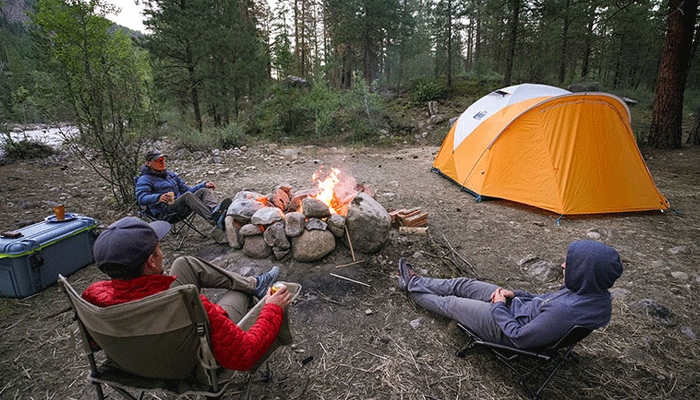
It’s important to stock up on emergency food supplies that can last for two weeks. These foods should be nonperishable and don’t require refrigeration.
You can store these foods in a variety of ways including dehydrating, canning, and vacuum sealing. It’s also important to rotate your supplies to avoid expiration.
Plan Ahead
When building your emergency food supply, the first step is planning ahead. This means thinking about the kinds of foods your family eats and will want to eat during an emergency, as well as determining how much you should store.
While shelf-stable pantry items like flour, sugar, rice, and beans will make up the bulk of your emergency storage, don’t forget to include canned vegetables and fruit. Not only do these add variety and nutritional value to your emergency supplies, but they also can help provide a sense of comfort and normalcy during a stressful time.
Remember to regularly inspect your emergency foods for signs of spoilage. Look for rust, bulging or leaking cans, and large or severe dents. Also, check for broken or missing seals. If you find any damaged or spoiled items, replace them immediately.
You can also save money and add variety to your emergency supply by using your regular grocery shopping trips as a chance to stock up on additional emergency foods. Look for items that are on sale or marked down, and make sure you purchase enough to get you through the next few weeks if possible. You can also try shopping at local grocers that offer bulk items or searching for discount stores. Also, consider joining a gleaners program (these are not available everywhere, but you can search for them in your area). They are a great way to gain access to fresh food that would otherwise be wasted and then donated to those who need it most. Additionally, explore Food & Drinks Promo Codes for potential discounts on your emergency food purchases.
Another smart plan is to invest in a couple of weeks of meals that require no cooking or only minimal preparation. These pre-packaged foods are easy to store, ready to eat, and filled with the nutrients your family needs in an emergency.
Stock Up
Having enough food in the event of an emergency can be lifesaving and deeply comforting. While building an emergency supply might seem like a daunting task, the first step is to take stock of what you have already on hand. To do this, start by listing all of the basic foods your family normally keeps in the pantry. Keeping track of your inventory will help you determine what types of foods to buy to fill in gaps in your pantry.
As you begin to build your emergency food supply, it is important to select foods that are easy to prepare. You will also want to choose foods that are high in protein and calories, but low in fat and sodium.
A few of the easiest foods to store are shelf-stable pantry items like flour, rice, sugar, beans, and salt. You might also consider storing canned foods, such as canned fruits and vegetables, or dried foods, such as instant noodles and instant potatoes.
If a particular food requires cooking, be sure to include a source of heat for preparation. This could be a camp stove, a fire in the fireplace, a fondue pot, or even a chafing dish. In addition, make a list of the ingredients you need to cook a particular meal and keep them in your emergency food supply so they will be ready to use in an emergency.
Another good option is freeze-dried food, which can be stored in a cool, dry place and can be reconstituted with hot or room-temperature water. While freeze-dried food does have a higher up-front cost, it is long-lasting and can provide you with a variety of different meals. Consider exploring Valley Food Storage Coupon Code options to get the best deals on freeze-dried food for your emergency supply.
Store in a Cool Place
When building an emergency food supply, it is important to consider the needs of your family. For example, does anyone have dietary restrictions or allergies? It is also important to consider your family’s preferences and tastes. A good rule of thumb is to plan on a mix of foods that are nutritious and can be eaten cold or warmed up.
In addition, it is essential to store your food in a cool place. This will help to extend their shelf life and maintain quality. Be sure to keep your food away from heat sources like radiators and sunlight, which can cause it to spoil more quickly. It is also a good idea to keep your foods in airtight containers, which will help to protect them from rodents and insects.
It is also a good idea to rotate your food regularly. This will help to prevent it from spoiling and will ensure that you are always using the oldest items first. Make sure to clearly label and date your foods so you can keep track of when they were packaged or bottled.
If you are storing canned foods as part of your emergency food supplies, it is also a good idea to inspect them regularly. Be sure to discard any that are rusted, bulging, or severely dented as these can cause the contents of the can to spoil. It is also a good idea to check the seals on your cans regularly and replace them if they are broken or showing signs of damage.
Keep an Inventory
In an emergency, people are often stressed and hungry. During that time, it’s best to eat foods that you enjoy and know. This can save you money, stress, and the health issues that come with eating unfamiliar food in a stressful situation.
Shelf-stable, home-canned foods are an excellent choice for many emergency food supply needs, but it’s also important to have other types of non-perishable food available, too. These items should include staples such as flour, rice, salt, and sugar that can be stored for long periods, as well as canned vegetables and fruits. In addition, there are commercially prepared meals that require little or no preparation that you can add to your emergency food storage if desired.
While it is ideal to build an emergency food supply that will last a few weeks, most people aren’t able or willing to stockpile years of food. The recommended minimum for an emergency food supply is two weeks, but this can easily be stretched depending on how much you can store and how quickly your supplies will be needed.
When building your emergency food supply, it’s helpful to keep a list of the foods you have stored, as well as their expiration dates. Rotate these items periodically, using the first-in, first-out system. This will help to ensure that you are always using the oldest items in your stockpile first, and avoid any surprises when you need to rely on your supply during an emergency. You can use this same list to help you restock your emergency pantry during sales, coupons, or grocery shopping trips. By restocking regularly, you can build your emergency supply without increasing the overall volume of food you have stored.
Make a Plan
In a disaster situation, you don’t have the luxury of preparing your family’s meals with painstaking care. You’ll need quick, nutritious meals that require minimal preparation and cooking time. This is where your emergency food supply will come into play. Having easy-to-store and ready-to-use foods on hand will save you money, reduce stress during an emergency, and ensure that your family’s nutritional needs are met.
Whether it’s a week or two of emergency foods, or an entire month’s worth, having an emergency food plan is important to your family’s well-being. Having a solid emergency food supply is especially critical when you are dealing with natural disasters, power outages, and other emergencies that disrupt normal food distribution. Having an emergency food supply can also help you avoid price gouging during these times.
When you’re planning your emergency food supply, make sure to include a variety of different foods, including a several-day supply of canned foods and dry mixes. It’s also a good idea to stock up on cooking and eating utensils, a manual can opener, and other supplies that you might need in a crisis.
While shelf-stable pantry staples like rice, beans, flour, and sugar should make up the bulk of your family’s emergency food supply, there’s nothing better than having a few cans of nourishing food on hand in a disaster. Consider adding to your emergency food supply by purchasing a few cans of your favorite foods during each grocery shopping trip or by joining a local gleaners organization in your area. Gleaners distribute excess produce from local farms to low-income families in need, so they’re a great way to add to your food storage without spending a fortune.
Conclusion
Building an emergency food supply is a crucial task that everyone should undertake. By following the tips and guidelines outlined in this guide, you can ensure that you and your loved ones are prepared for any unforeseen circumstances that may arise. Remember to consider your dietary needs, storage conditions, and expiration dates when selecting your food items. With a well-stocked emergency food supply, you can face any crisis with confidence and peace of mind.








